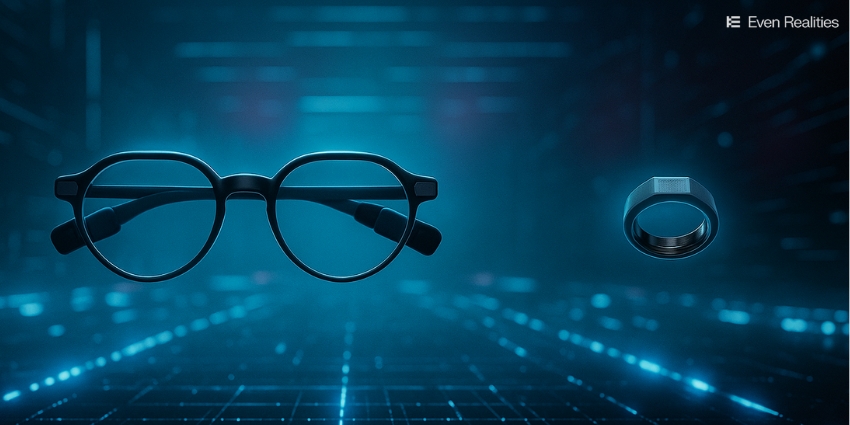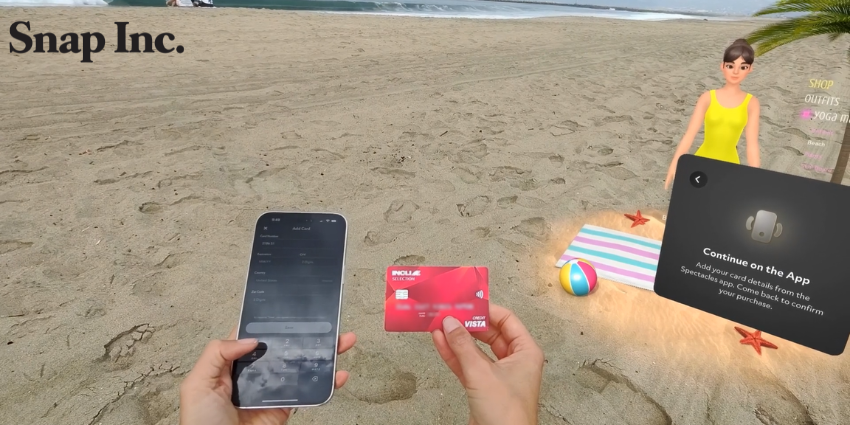Could the growing selection of XReal Enterprise AR solutions be exactly what your business has been searching for? Maybe. Augmented reality in the workplace is still growing up. We might have plenty of smartphones and tablets that can handle AR experiences, but truly immersive smart glasses are often much harder to find. That’s where XReal has an edge.
Rather than following in Meta and Apple’s footsteps in building VR and mixed reality headsets, XReal (previously Nreal) has gone all-in on smart, lightweight specs.
Over the past 18 months, they’ve done what many hardware startups never do: evolve without alienating, scale without bloating, and start speaking the language of business without losing the product simplicity that made them interesting in the first place.
In early 2024, XReal closed a $60 million funding round, positioning itself to compete directly against the Apple’s Vision Pro and Meta’s Ray-Ban Meta collaboration. Then the company rolled out it’s Air 2 Pro and Ultra glasses, followed by the XReal One collection. Now it’s working hand-in-hand with Google on Project Aura – specs powered by Android XR.
While the consumer crowd continues to test the boundaries of immersive media, enterprise buyers are asking a different question: can XReal tech make our teams faster, safer, smarter?
Let’s find out.
XReal Enterprise AR: Who is XReal?
XReal didn’t just stumble into the AR spotlight. It built there, starting with entertainment and gaming, then shifting toward scalable hardware that could do more than entertain. Founded in Beijing in 2018 under the name NReal, XReal was one of the first companies to ship consumer-grade AR glasses at scale. By 2024, XReal had sold more than 350,000 pairs of AR glasses worldwide.
When NReal officially rebranded to XReal in 2023, it didn’t just change its name. It said the “X” in the title was reflective of its mission to building augmented reality for everyone. Not just consumers, but professionals, educators, and field workers too.
Since then, the company has expanded rapidly across Europe, the US, South Korea, and Japan, tapped into new partnerships (most recently with Google), and increased its enterprise focus. In fact, at CES 2025, XReal highlighted new and renewed collaborations with industry leaders from BMW, to Qualcomm, T-Mobile, Bose, and more.
It even drew attention to the fact that it was the only AR company in 2024 to rank among the top five global brands by market share in the ARVR industry. XReal is growing up, and fast.
XReal Enterprise AR: The Hardware Lineup
Despite a heavy focus on simplicity, XReal has quietly begun to build one of the most versatile hardware portfolios in AR today. The XReal enterprise AR lineup covers everything from affordable, straightforward glasses like the Air collection, to the Immersive XReal One specs, the AI-powered upcoming Aura glasses, and even accessories, like the XReal Beam Pro.
The XReal Air Series
This is where most users start with XReal enterprise AR, and for good reason. The XReal Air, Air 2, and Air 2 Pro look like premium sunglasses but deliver crisp visuals with built-in micro displays. Most models weigh less than 80 grams, and high-end models like the XReal Air 2 Pro even features a proprietary optic engine, as well as three levels of immersive control.
While features depend on the version you get, even the relatively affordable Air 2 Pros (costing around $500), boast some pretty impressive features. They might not have spatial computing capabilities, but they do have built-in audio, refresh rates of up to 120hz, and they’re compatible with various external tools and software apps.
The Air 2 Ultra glasses, introduced at CES 2024, are even more advanced, layering in spatial computing via Samsung processors, and a custom computing unit. They come with head and hand tracking, 6DoF tracking, dual greyscale cameras for capturing content, and even SDK support.
XReal One Series
The XReal One Series are where XReal Enterprise AR glasses really started to redefine what “smart glasses” mean. These glasses take computing power a step further, with an enhanced version of XReal’s custom X1 chip. Both versions, the One, and One Pro, support 3DoF, three immersion models, 4 million pixels, and Optic Engine for processing power.
They also come with built-in speakers from Bose – perfect for immersive collaboration sessions. The One Pro brings better battery life and improved thermal performance, allowing for extended use in fast-paced environments.
XReal Accessories: The Beam Pro, Eye, and Hub
Think XReal just offers smart glasses? Think again. The XReal Beam Pro is one of XReal’s most popular accessories (bought in a bundle with about 70% of the company’s glasses). This pocket-sized device connects your XReal glasses to almost anything: Android, iOS, Windows, macOS, even consoles. It acts as a translator and power hub.
There’s even a touchscreen, Android 13 OS, and the ability to run apps natively. For companies without a mobile device strategy in place, it’s a full-stack AR solution that fits in your pocket.
Then there’s the XReal Hub—a simple but cost-effective device for charging your glasses and connecting them to other devices in real time. Plus, XReal is now working on a new accessory—the “Eye”—designed to let users take immersive photos straight from their specs.
Project Aura: XReal Enterprise AR with Google
If XReal’s Air and One lines are about comfort and compatibility, Project Aura is about ambition. This isn’t an accessory. It’s a full computing platform shaped like a pair of glasses.
Unveiled at Google I/O 2025, Aura is XReal’s first pair of glasses to natively run Android XR. It is powered by an onboard Snapdragon XR processor, integrated AI functions, and a redesigned UI for spatial interaction. Project Aura is still in its early stages, but it’s exciting.
These glasses should introduce us to specs with voice, vision, and contextual awareness baked in from the start. Plus, companies will have access to millions of Android apps, more immersive and engaging than ever before.
XReal Enterprise AR: How The Tech Works
XReal has made a name for itself by keeping things deceptively simple. But under that minimal aesthetic is a surprisingly adaptable and forward-looking tech stack.
Let’s start with the basics. XReal’s hardware is designed for comfort-first deployment, but there’s nuance in what each device delivers.
- Field of view: Ranges from 46° (Air, One) up to 57° (One Pro), with the Air 2 Ultra sitting comfortably in the middle at 52°. It’s not wraparound immersive, but it’s perfect for contextual overlays, spatial browsers, or side-by-side apps in a 3D layout.
- Weight: A consistent strength across the lineup: all glasses clock in between 72g and 80g. That makes them some of the lightest in the AR category, easy to wear in meetings, on factory floors, or in customer-facing environments without making anyone self-conscious.
- Tethering and power: Options vary. Most glasses rely on USB-C connections, using the Beam Pro, or compatible mobile devices for content and power. The One series is tether-free, thanks to its onboard computing, while the Beam Pro allows for wireless streaming or even standalone Android use.
- OS compatibility: Thanks to the Beam line, XReal glasses can integrate with Windows, macOS, iOS, Android, and even gaming consoles. It’s rare to find an AR device that works across so many environments out of the box.
Plus, with Project Aura, XReal is stepping into native Android XR, running a spatial version of Android directly on the glasses. That opens the door for seamless integration with Google apps, AI tools, and the entire Android app ecosystem.
Software Ecosystem and Third-Party Integrations
XReal Enterprise AR solutions have a lot going for them from a software perspective, too. The core operating system, Nebula, is Android-based and powers most XReal experiences today. It supports spatial browsers, floating windows, and virtual multi-monitor setups. For enterprise dev teams familiar with Android, building for Nebula is approachable, but not frictionless.
Plus, thanks to the Beam Pro, users have access to endless apps, built-in casting capabilities, and mirroring, without the need for custom coding. As mentioned above, the Android XR collaboration will only extend XReal’s ecosystem even further, making it easier for companies to tap into Google-approved apps and features without an external device.
That said, the enterprise app ecosystem is still maturing. If you’re looking for prebuilt integrations with Salesforce, ServiceNow, or Workday, you’ll need to either wait or invest in partnerships with XR development shops.
Spatial Computing and Gesture Control Features
Spatial computing is where XReal starts to differentiate itself within the “lightweight AR” category. Plenty of smart glasses out there offer great visuals or audio but no actual “spatial interactions,” including some of XReal’s early Air models.
But XReal is diving deeper into the spatial computing space. The One Series of glasses handles 3DoF tracking. That’s perfectly adequate for display-based tasks: multi-screen setups, virtual dashboards, data overlays, and guided walkthroughs.
The Air 2 Ultra, however, introduces 6DoF with dual grayscale cameras. That means the glasses know where you are in space, not just where you’re looking. It enables basic room mapping, object anchoring, and spatial model interaction. For training, design, or simulation tasks, this adds a lot of power without jumping to a heavier headset.
With Project Aura, spatial capability is expected to scale even further. Because it’s built for Android XR, Aura will use Google’s new spatial APIs, including environmental understanding, object occlusion, and persistent AR. In short, it aims to do what Apple’s Vision Pro does for iOS but in an open ecosystem.
XReal Enterprise AR Use Cases
You can talk about AR’s potential in the workplace all day, but what really matters is who’s using it, why, and what it’s helping to change. That’s where XReal enterprise AR starts to prove its worth.
XReal is already working with companies like BMW to bring AR experiences to the future of in-car entertainment. Its wide range of products also supports a wide selection of enterprise-ready applications such as:
Remote Collaboration in Engineering and Design
When teams are spread across cities, or continents, traditional video calls just don’t cut it for reviewing spatial work. Several design firms and engineering departments have adopted XReal to view 3D models, blueprints, and CAD files together, in real-time.
As AR smart glasses continue to prove themselves for field workers, companies will discover new ways to use specs like the XReal One Pro and Air 2 Ultra glasses for collaboration, onboarding, prototype design, and even maintenance.
Immersive Training and Onboarding
Manufacturing, healthcare, and heavy industry all share one problem: training new workers in complex environments is expensive, inconsistent, and often risky.
With XReal, businesses deploy guided simulations, virtual safety procedures, and step-by-step onboarding overlays. The hardware’s light profile allows new hires to move freely, perform mock tasks, and get used to real-world layouts, all in AR. With integrations for collaborative apps, teams can even access support from colleagues in real-time.
Enhanced Productivity
Imagine walking into a hotel room or satellite office and deploying a full multi-monitor workstation, without packing a single screen. That’s what finance teams, developers, and data analysts use XReal for.
Using Beam or Beam Pro, they can open multiple windows, pin dashboards in their visual space, and toggle between tools without minimizing or tabbing out. For teams that live in spreadsheets or code, this is a major time saver and a productivity booster.
Customer-Facing Experiences
Since they’re more affordable (and often more comfortable) than hefty headsets, XReal enterprise AR smart glasses are great for customer-facing experiences too. Luxury retailers could use them to allow customers to try outfits on or explore product configurations from a store location.
In real estate, customers could use smart glasses to attend an open house and explore a building from a distance, before they even consider buying. Architects could even walk clients through a property that’s not built yet, furnished, finished, and scaled to life.
How XReal Compares in the Real World
Enterprise AR adoption might not be as big as VR or MR adoption right now, but there are still some major players fighting for attention.
There are legacy players like Magic Leap and Microsoft (with the now-discontinued HoloLens 2 headset), proving that augmented reality does have a role in the enterprise landscape. Those devices featured industrial-grade spatial computing, rock-solid IT infrastructure, and many exciting features, but they were expensive and somewhat bulky compared to the headsets we know today.
Then we have more modern options, like Lenovo’s ThinkReality A3 glasses, specs from innovators like Vuzix, Rokid, and Realwear, and the infinitely popular Meta Ray Ban glasses.
All of these alternatives have their benefits:
- Lenovo brings excellent IT management and rugged durability.
- Vuzix and RealWear offer voice-first interfaces for hands-busy fieldwork.
- Meta Ray-Bans are sleek, social, and smarter than most people realize, with AI and voice baked right in.
But the question that matters to most business buyers isn’t “Which headset is flashiest?” It’s “Which one is actually wearable, flexible, and scalable for my team?”
Where XReal Enterprise AR Stands Out
XReal’s Enterprise AR glasses might not be as robust as some alternatives. There are no native MDM solutions yet. Gesture input is minimal (for now), and 6DoF and spatial computing features are limited to a few devices.
But suppose you’re launching a pilot project, scaling AR across a frontline team, enhancing design reviews without blowing your budget, or just want something people will wear for more than ten minutes. In that case, XReal makes a very compelling partner.
XReal is a great fit for:
- Mid-Sized Businesses with Distributed Teams: if you’ve got people working across locations, designers in the office, trainers in the field, retail staff on the floor, XReal is an easy way to deliver consistent, immersive content without shipping headsets the size of a toaster, or spending a fortune.
- Companies with Android-Based Workflows: If your tools already live in the Android ecosystem (or you’re using tablets/phones on Android), XReal slots in beautifully, especially with Beam Pro or Project Aura. You’ll get faster deployment, easier support, and more app compatibility out of the gate.
- Innovation and Training Teams: If your job is to explore what’s next or onboard people faster, XReal delivers just enough AR to make a real impact without overwhelming your team or your procurement lead.
XReal Enterprise AI Deployment: Strategy Tips
You’ve found the device. You’ve tested the glasses. People actually like wearing them. But then reality hits: How do you deploy this thing across 50 people? 500? How secure is the data? What’s it really going to cost? Here are a few things to remember as you tackle your deployment.
Security & Privacy: It’s All in the Policy
Many of XReal’s products are camera-equipped, internet-connected smart glasses. That means privacy concerns are real, especially in regulated industries or environments handling sensitive IP.
The Air 2 Ultra includes dual grayscale cameras for 6DoF tracking. While these don’t capture high-res imagery, they still process environmental data. Enterprises need to build usage policies: where glasses can be worn, what data is visible, how recorded content (if any) is handled, and which networks the devices can access.
There’s no native end-to-end encryption or zero-trust framework (yet), so security and privacy is on you, and your team.
IT Management: Bring Your Own Band-Aid
Right now, XReal does not offer full enterprise MDM (Mobile Device Management) support out of the box, like you’d get from something like Meta Quest for Business. There’s no single dashboard for updates, usage tracking, or remote lockdown.
That said, Beam Pro runs Android, which means it can support third-party MDM tools like VMware Workspace ONE or Microsoft Intune, though integration is still in early stages and often requires technical hand-holding.
Again, you’re going to have to figure out your own IT management policy, for now. However, you may be able to find partners who can work with you on bridging the gap.
Proving ROI
XReal isn’t just affordable, it’s deployable at scale without giving your finance team a heart attack.
Most enterprise setups land between $800 and $1,000 per seat, including hardware like the Air 2 Ultra and Beam Pro. That’s a fraction of the cost of a HoloLens 2 or Magic Leap 2, which can easily hit $3,000–$3,500 each.
You’ll still need to consider things like Android MDM licensing, light training, and some internal IT support, but many companies will see clear, measurable returns fast. Just ensure you track adoption rates, usage, and overall performance outcomes.
Is XReal AR Enterprise-Ready?
So, is XReal Enterprise AR ready? Or is it still just testing the waters? The company might not check every enterprise box yet, but for many businesses, it checks the ones that matter.
The hardware is polished, wearable, and compatible across platforms. Tools like Beam Pro bring Android XR into reach with zero dev lift. And at under $1,000 per seat, it’s one of the few AR options that makes sense to roll out beyond a lab demo.
Yes, enterprise controls like MDM and data compliance are still evolving, and Aura is still in its early days. But if you’re piloting immersive training, remote design, or customer-facing workflows, XReal enterprise AR is already delivering real ROI.
The smartest path forward is to start small, run a focused pilot, track results, and then scale what works. AR doesn’t need to be complicated to be transformative, and XReal proves that better than most.







